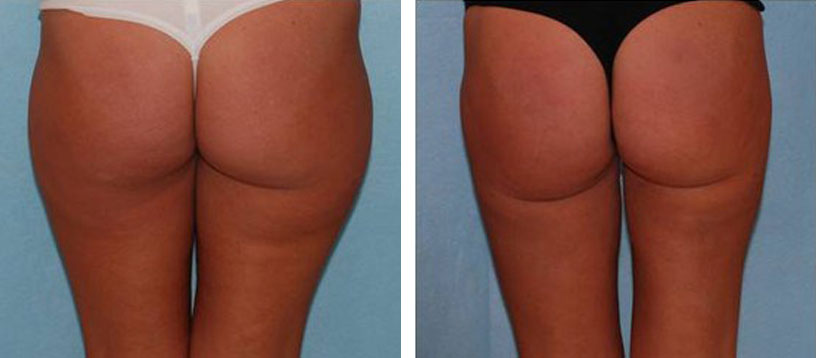Thigh Lift in Ho Chi Minh City
Search and Compare the Best Clinics and Doctors at the Lowest Prices for Thigh Lift in Ho Chi Minh City

Find the best clinics for Thigh Lift in Ho Chi Minh City
No pricing info available
Turkey offers the best prices Worldwide
Price: $ 758
From 15 verified reviews
Trung Hoang, 21 September 2019
The eyelid nose in GNG is very full, the height is high enough so it looks very natural
WHY US?
At Medijump, we're making medical easy. You can search, compare, discuss, and book your medical all in one place. We open the door to the best medical providers worldwide, saving you time and energy along the way, and it's all for FREE, no hidden fees, and no price markups guaranteed. So what are you waiting for?

Free

Best Price

Widest Selection

Risk-Free
What you need to know about Thigh Lift in Ho Chi Minh City

Thigh Lift, also known as thighplasty, is a cosmetic surgery to improve and reshape the appearance of the thighs by reducing excess skin and fat. The goal of a thigh lift is to contour your thighs so that they look in proportion with the rest of your body as well as to eliminate sagging skin due to aging, pregnancy, or significant weight loss. If you want your thighs to be more youthful-looking or proportionate to your body image, and fitness and weight control have not worked for you, then you can consider this procedure.
What Does the Procedure Involve?
A thigh lift is performed under general or epidural anesthetic. Your surgeon may create an incision in the groin area, then they may remove excess skin and fat. After that, your surgeon reshapes and tightens the underlying tissue, and the remaining skin is smoothed, lifted, and stitched into place at the incision site. Your doctor may also combine the procedure with liposuction.
How Long Should I Stay in Ho Chi Minh City for a Thigh Lift Procedure?
Since thigh lift is often performed as an outpatient procedure, you should be able to leave the hospital on the same day of the surgery. However, the recommended total length of stay in Ho Chi Minh City is about 14 days since your doctor needs to remove the stitches within two weeks following the surgery.
What's the Recovery Time for Thigh Lift Procedures in Ho Chi Minh City?
You can expect to go back to work within 7 to 10 days after your surgery, but the full recovery period until you can resume physical activity may take about 4 to 6 weeks. Since the recovery period can vary from one person to another, make sure to ask your doctor about your recovery timeline, including when you can start doing intense exercise, heavy lifting, and other vigorous activities.
What sort of Aftercare is Required for Thigh Lift Procedures in Ho Chi Minh City?
You will be given specific instructions regarding medication, wound care, diet, and exercise. You will likely need to attend a follow-up checkup with your plastic surgeon to monitor your healing progress. After you are fully healed, it is important for you to follow a healthy diet, have regular exercise, and maintain a healthy weight to retain the result of your thigh lift.
What's the Success Rate of Thigh Lift Procedures in Ho Chi Minh City?
A thigh lift is generally safe and the success rate is high. However, you need to be aware that the procedure has some side effects and risks, such as poor wound healing, infection, bleeding, seroma, asymmetry, deep vein thrombosis, skin loss, persistent pain, skin discoloration, numbness, recurrent looseness of the skin, and allergic reaction to the anesthetic.
Are there Alternatives to Thigh Lift Procedures in Ho Chi Minh City?
If you do not like the idea of undergoing surgery or you are not an ideal candidate for the procedure, you may want to consider the alternatives, including liposuction, Vaser liposuction, and laser skin tightening. Consult with your plastic surgeon about which procedure is better for your situation.
What Should You Expect Before and After the Procedure
Before a tight lift, your thighs may look dimpled, saggy, and flabby. You may not feel confident about the appearance of your thighs because they are not proportionate to your body image. After the procedure, you can immediately see a positive change to your thighs. Your thighs will look more youthful and firmer.
Whilst the information presented here has been accurately sourced and verified by a medical professional for its accuracy, it is still advised to consult with your doctor before pursuing a medical treatment at one of the listed medical providers
No Time?
Tell us what you're looking for and we'll reachout to the top clinics all at once
Enquire Now

Popular Procedures in Ho Chi Minh City
Prices Start From $26

Prices Start From $113

Prices Start From $931

Prices Start From $275

Prices Start From $76

Prices Start From $5

Recommended Medical Centers in Ho Chi Minh City for Thigh Lift

- Interpreter services
- Translation service
- Religious facilities
- Medical records transfer
- Medical travel insurance
- Health insurance coordination
- TV in the room
- Safe in the room
- Phone in the room
- Private rooms for patients available

- Interpreter services
- Translation service
- Religious facilities
- Medical records transfer
- Medical travel insurance
- Health insurance coordination
- TV in the room
- Safe in the room
- Phone in the room
- Private rooms for patients available

- Interpreter services
- Translation service
- Religious facilities
- Medical records transfer
- Medical travel insurance
- Health insurance coordination
- TV in the room
- Safe in the room
- Phone in the room
- Private rooms for patients available

- Interpreter services
- Translation service
- Religious facilities
- Medical records transfer
- Medical travel insurance
- Health insurance coordination
- TV in the room
- Safe in the room
- Phone in the room
- Private rooms for patients available

- Interpreter services
- Translation service
- Religious facilities
- Medical records transfer
- Medical travel insurance
- Health insurance coordination
- TV in the room
- Safe in the room
- Phone in the room
- Private rooms for patients available

- Interpreter services
- Translation service
- Religious facilities
- Medical records transfer
- Medical travel insurance
- Health insurance coordination
- TV in the room
- Safe in the room
- Phone in the room
- Private rooms for patients available

- Interpreter services
- Translation service
- Religious facilities
- Medical records transfer
- Medical travel insurance
- Health insurance coordination
- TV in the room
- Safe in the room
- Phone in the room
- Private rooms for patients available

- Interpreter services
- Translation service
- Religious facilities
- Medical records transfer
- Medical travel insurance
- Health insurance coordination
- TV in the room
- Safe in the room
- Phone in the room
- Private rooms for patients available

- Interpreter services
- Translation service
- Religious facilities
- Medical records transfer
- Medical travel insurance
- Health insurance coordination
- TV in the room
- Safe in the room
- Phone in the room
- Private rooms for patients available

- Interpreter services
- Translation service
- Religious facilities
- Medical records transfer
- Medical travel insurance
- Health insurance coordination
- TV in the room
- Safe in the room
- Phone in the room
- Private rooms for patients available
Thigh Lift in and around Ho Chi Minh City
About Ho Chi Minh
Ho Chi Minh City also referred to by its former name of Saigon, is Vietnam’s largest city. Although it is busy and chaotic, the city is actually teeming with wonderful shops, intriguing history, delicious food, and fantastic nightlife. While many people normally come to the city to explore its temples and museums, there’s also a growing trend of medical tourism. More and more people are coming to the city to take advantage of healthcare. One of the main reasons behind Ho Chi Minh’s emerging popularity in medical tourism is affordable prices. It’s more affordable to have any treatment performed here than in Thailand and Singapore.
Popular Parts of Ho Chi Minh
There are 19 districts in Ho Chi Minh, but the most popular one is District 1 (also known as Saigon District), which serves as the city center. Here, visitors can find bars, restaurants, cafés, and iconic landmarks. Some of the most popular attractions in this district are the Bitexco Tower Skydeck, the Independence Palace, the Notre Dame Cathedral and Post Office, Bui Vien Street, and Nguyen Hue Walking Street. Besides District 1, Chinatown or Cholon is also very popular as it is home to the biggest Chinese community in this country, and Binh Tay Market is its main draw. Full of great food, history, and wonderful sights, this area is an excellent place to wander around and have fun.
Transport in Ho Chi Minh
The main gateway to Ho Chi Minh is the Tân Sơn Nhất International Airport, which is the busiest airport in Vietnam. It serves flights to and from numerous cities in Asia, including Bangkok, Singapore, and Seoul. There are also several low-cost airlines available for budget travelers, such as VietJet Air and Jetstar Pacific Airlines. To get around the city, buses, taxis, Xe Om (motorcycle taxis), Cyclos, and Grab Taxi (similar to Uber) are available. Buses are comfortable, but taxis and Grab Taxi are the easiest way to travel around. Xe Om and Cyclos are affordable, but they tend to be suitable for short-distance trips only.
Visas in Ho Chi Minh
Vietnam allows citizens of 24 countries, including the UK, Denmark, and Cambodia, to enter and stay in the country for up to 90 days without a visa. Other nationalities need to apply for a visa. The country has an electronic visa system available for citizens of 81 countries.
Weather in Ho Chi Minh
Ho Chi Minh has a tropical monsoon climate and the average temperatures remain all year round. December to March is the dry season, with the temperatures ranging from 21°C to 34°C. May to September is the wet season, which experiences frequent rain showers. July to November is the peak period for typhoons.
Additional Info
- Local Currency: The official currency is the Vietnamese Dong (VND). 1 USD is equivalent to 23,270 VND.
- Money & Payments: ATMs are widespread. Credit cards are accepted at most hotels, but always bring cash with you. Tipping is appreciated, but not expected.
- Local Language: The official language is Vietnamese. English is widely spoken, particularly in tourist areas.
- Local Culture and Religion: The constitution provides for freedom of worship. Vietnamese folk religion is a major religion, but many people are not religious. Other religions, such as Buddhism and Christianity, are freely practiced.
- Public Holidays: New Year’s Day, Tet Holiday, Reunification Day, International Labor Day, and National Day are some of the most celebrated holidays in Ho Chi Minh.
Popular Searches
- Plastic Surgery in Thailand
- Dental Implants in Thailand
- Hair Transplant in Thailand
- Breast Augmentation Thailand
- Gastric Sleeve in Thailand
- Gender Reassignment Surgery in Thailand
- Laser Hair Removal in Bangkok
- Botox in Bangkok
- Dermatology in Bangkok
- Breast Augmentation in Bangkok
- Coolsculpting in Bangkok
- Veneers in Turkey
- Hair Transplant in Turkey
- Rhinoplasty in Turkey
- Stem Cell Therapy in Mexico
- Rhinoplasty in Mexico
- Liposuction in Mexico
- Coolsculpting in Tijuana
- Rhinoplasty in Korea
- Scar Removal in Korea
- Gastric Sleeve in Turkey
- Bone Marrow Transplant in India
- Invisalign in Malaysia
- Plastic Surgery in the Dominican Republic
- Tummy Tuck in the Dominican Republic
- Plastic and Cosmetic Surgery in Poland
- Rhinoplasty in Poland
- Hair Implant in Poland
- Dental Implants in Poland
- IVF in Turkey
